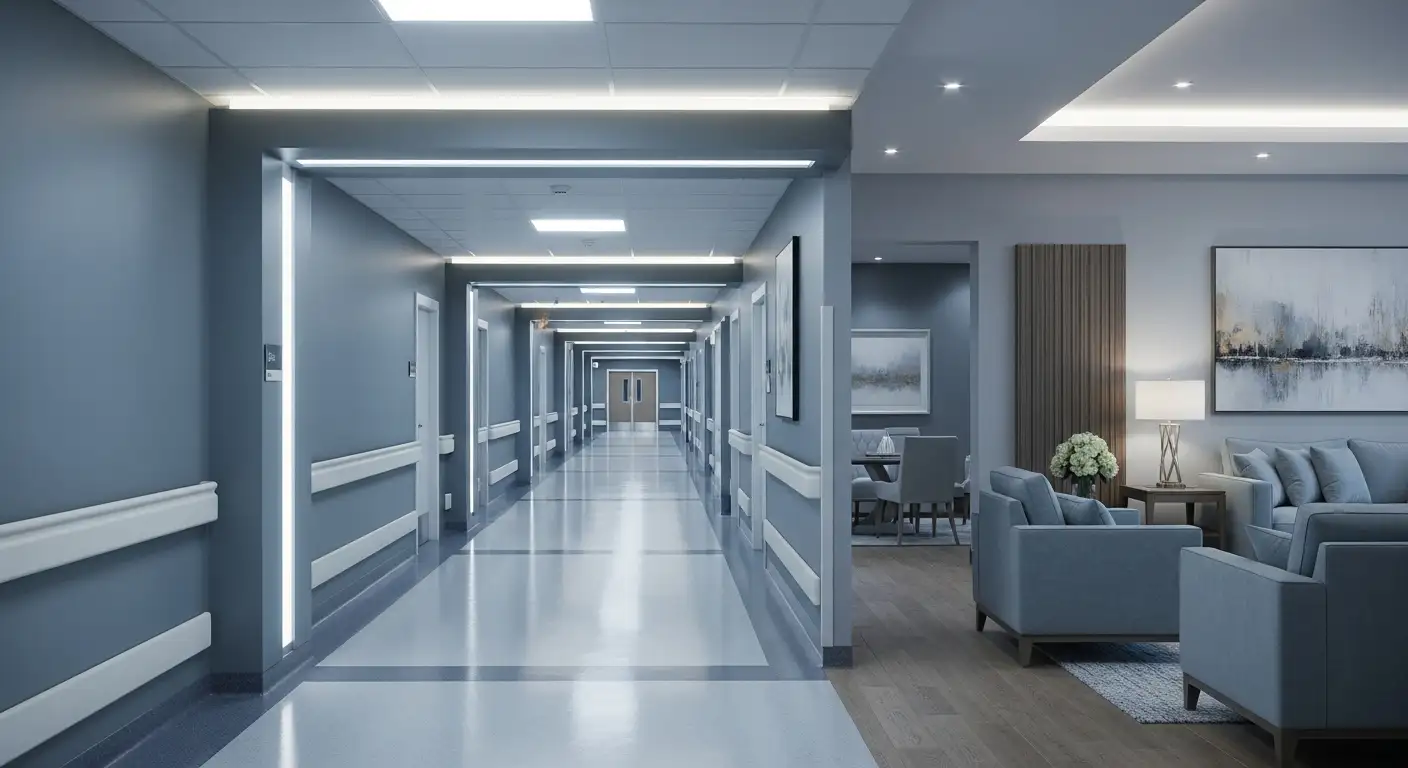Understanding Falls in the Elderly
Falls can have a significant impact on the health and well-being of older adults. It is important to understand the consequences of falls and the common causes behind them.

Impact of Falls on Older Adults
Falls are a major concern for the elderly population, as they can lead to severe injuries and even death. In fact, falls are the second leading cause of unintentional injury deaths globally, with approximately 36,000 older adults in Europe dying from falls each year. In the United States, falls were the leading cause of death from injury in the elderly, with approximately 8,313 deaths reported in 1986 for persons aged 65 and older [2]. Falls can result in fractures, head injuries, and other complications that can significantly impact an individual's quality of life.
Apart from the physical consequences, falls can also have psychological effects on older adults. Fear of falling can lead to a loss of confidence and reduced mobility, which can further increase the risk of falls. It is essential to address fall prevention strategies to ensure the overall well-being of older adults.
Common Causes of Falls
Understanding the common causes of falls is crucial in implementing effective fall prevention measures. Some factors that contribute to falls in the elderly include:
- Environmental hazards: Poorly lit areas, slippery floors, loose rugs, and cluttered pathways can increase the risk of falls. Creating a safe environment by removing obstacles and ensuring adequate lighting is important for fall prevention.
- Muscle weakness and balance issues: As individuals age, muscle strength and balance may decline, making them more susceptible to falls. Regular exercise and fitness programs for the elderly that focus on strength and balance can help improve stability and reduce the risk of falls.
- Medication side effects: Certain medications can cause dizziness, drowsiness, or impaired coordination, increasing the likelihood of falls. It is important to review medications with healthcare professionals to minimize these side effects.
- Chronic health conditions: Conditions such as arthritis, Parkinson's disease, and vision problems can affect balance and coordination, making falls more likely. Proper management of these conditions and regular check-ups can help reduce fall risks.
- Improper footwear: Wearing unsuitable footwear, such as shoes with no grip or high heels, can increase the risk of falls. Encouraging the use of sturdy, well-fitting shoes with good traction can help prevent falls.
By identifying the impact of falls and understanding their common causes, we can implement effective strategies for fall prevention. In the following sections, we will explore the significance of fall prevention and various strategies that can be employed to minimize the risk of falls among older adults.
Importance of Fall Prevention
Falls among older adults are a significant concern, as they can lead to serious injuries and have a detrimental impact on their overall well-being. Understanding the importance of fall prevention is crucial for promoting the safety and independence of older individuals.
Significance of Fall Prevention
Falls are a leading cause of injury among older adults, making fall prevention a critical topic to address as people age. The physical changes that occur with aging, along with various health conditions and medications used to treat those conditions, can increase the likelihood of falls. In fact, falls are responsible for 70 percent of accidental deaths in individuals aged 75 years and older, with approximately 9,500 deaths in older Americans associated with falls each year.
Preventing falls is crucial because they can result in severe injuries, such as fractures of the hip, forearm, humerus, and pelvis, which are often compounded by the presence of osteoporosis. Falls can also be markers of poor health and declining function, impacting an individual's overall quality of life. It is estimated that about one-third of community-dwelling elderly individuals and up to 60 percent of nursing home residents experience falls each year, with some individuals experiencing multiple episodes [4].
Strategies for Fall Prevention
Implementing strategies for fall prevention plays a crucial role in reducing the risk of falls among older adults. These strategies focus on creating a safe environment, promoting physical activity, and considering medical interventions when necessary.
To prevent falls, individuals and caregivers can take the following steps:
- Creating a Safe Environment: Modifying the home environment to reduce fall hazards is essential. This includes improving lighting, removing clutter, securing rugs, and installing safety devices like handrails and grab bars. For more detailed information on home modifications, refer to our article on bathroom safety for the elderly.
- Promoting Physical Activity: Engaging in regular exercise and fitness for the elderly helps improve strength, balance, and flexibility, reducing the risk of falls. Incorporating exercises that focus on balance, strength training, and flexibility can be particularly beneficial. Examples of suitable exercises include tai chi, walking, and water aerobics. Refer to our article on activities for the elderly for more exercise ideas.
- Using Assistive Devices: Healthcare providers may recommend the use of assistive devices such as canes or walkers to help older adults maintain stability and prevent falls. These devices provide additional support while walking and navigating uneven surfaces. Occupational therapists can also provide further fall prevention strategies and recommend assistive devices to enhance safety at home.
- Considering Occupational Therapy: Occupational therapists can conduct comprehensive fall risk assessments and provide recommendations to address specific challenges faced by older adults. They can suggest modifications to daily activities, recommend appropriate assistive devices, and provide strategies to enhance safety and independence at home.
To ensure a comprehensive approach to fall prevention, it is essential to identify individual risk factors and implement multifactorial interventions. By taking proactive steps to prevent falls, older adults can maintain their independence, reduce the risk of injuries, and enjoy a higher quality of life.
In the next sections, we will delve deeper into specific fall prevention strategies, such as exercise and home modifications, as well as the role of medical interventions and comprehensive fall risk assessments. Stay tuned for valuable insights and information on how to prevent falls among the elderly.
Exercise for Fall Prevention
Regular physical activity plays a vital role in fall prevention for the elderly and is essential for maintaining overall health and well-being. Engaging in specific exercises can improve strength, balance, and mobility, reducing the risk of falls. Let's explore the role of physical activity and different types of exercises suitable for the elderly.
Role of Physical Activity
Numerous studies have shown that exercise is effective in reducing falls and fall-related injuries among older adults. Physical exercises, including lower extremity strengthening, balance exercises, and multi-component exercise training, have demonstrated significant effects on lower extremity strength, balance outcomes, and mobility [1]. Regular exercise not only helps to improve physical fitness but also enhances confidence and independence, enabling older adults to maintain an active lifestyle.
Exercise training, encompassing strength, balance, and aerobic-based training, has been found to have long-lasting effects on fall prevention among older adults. By incorporating physical activity into their daily routines, older adults can improve their overall health and reduce their risk of falls.
Types of Exercises for the Elderly
Various types of exercises have been shown to effectively increase balance and reduce the risk of falls among the elderly population. Here are some examples:
- Resistance Exercise: Resistance exercises involve using weights, resistance bands, or bodyweight to improve muscle strength. These exercises focus on strengthening the major muscle groups and can be adapted to suit individual capabilities. Resistance training, when combined with aerobic exercise, has been found to increase balance measures in the elderly. Examples of resistance exercises include bicep curls, squats, and leg presses.
- Balance Training: Balance training programs aim to improve proprioception, coordination, and stability. These exercises challenge the body's ability to maintain balance and can be particularly beneficial for fall prevention. Specific balance exercises and interventions like Tai Chi have shown positive outcomes in improving balance measures and reducing the risk of falls in the elderly. Examples of balance exercises include standing on one leg, heel-to-toe walk, and yoga.
- Aerobic Exercise: Aerobic exercises, such as walking, swimming, or cycling, increase cardiovascular fitness and improve endurance. Regular aerobic exercise can enhance overall physical fitness, leading to improved balance and reduced fall risk. It is recommended to engage in moderate-intensity aerobic activities for at least 150 minutes per week, as per the guidelines for fitness in the elderly.
When incorporating exercise into a fall prevention program, it is important to consider individual abilities, preferences, and any existing health conditions. Consulting with a healthcare professional or a qualified exercise specialist can help design a personalized exercise plan that caters to specific needs.
To learn more about exercises suitable for the elderly, visit our article on fitness for the elderly. Remember to start exercises gradually, prioritize safety, and listen to your body. Engaging in regular physical activity can significantly contribute to fall prevention and improve overall well-being in older adults.
Home Modifications for Fall Prevention
Creating a safe environment is an essential aspect of fall prevention for the elderly. By taking proactive measures to modify the home, the risk of falls can be significantly reduced. This section will explore two key components of home modifications for fall prevention: creating a safe environment and home hazard prevention.
Creating a Safe Environment
Removing home hazards and ensuring a safe living environment is crucial in preventing falls among the elderly. By hazard-proofing the home and making it more accessible, the risk of tripping and falling can be minimized. Here are some key areas to focus on:
- Good Lighting: Adequate lighting is essential to help individuals see clearly and navigate their surroundings. Well-lit areas, especially stairways, hallways, and entrances, can prevent accidents caused by tripping on objects that are hard to see. Consider using motion-sensor lighting or bright LED bulbs to improve visibility.
- Clear Pathways: Keeping pathways clear of clutter, loose wires, and other obstacles is crucial. Ensure that furniture arrangements allow for easy movement and that there are no tripping hazards such as loose rugs or mats. Secure carpets and rugs with non-slip backing or remove them altogether if they pose a risk of slipping or tripping.
- Grab Bars and Handrails: Installing grab bars and handrails in key areas, such as near toilets, showers, and stairways, can provide stability and support. These assistive devices can help individuals maintain their balance while navigating potentially hazardous areas of the home.
Home Hazard Prevention
Taking steps to identify and address potential hazards within the home is an important part of fall prevention for the elderly. Here are some key considerations:
- Zero-Step Entrances: If possible, consider modifying entrances to eliminate steps or create ramps for easier access. Zero-step entrances reduce the risk of tripping or falling while entering or exiting the home.
- Bathroom Safety: The bathroom is a common area where falls can occur. Install grab bars near toilets and showers to provide stability. Non-slip mats or adhesive strips should be used in bathtubs and showers to prevent slipping. Consider additional bathroom safety measures outlined in our article on bathroom safety for the elderly.
- Proper Flooring: Ensure that flooring surfaces are slip-resistant, especially in areas prone to moisture, such as bathrooms and kitchens. Remove or secure loose carpets, rugs, or mats to prevent tripping hazards.
- Stair Safety: Stairways can be particularly hazardous for the elderly. Install handrails on both sides of the stairs, ensuring they are sturdy and securely fastened. Consider adding contrasting tape or paint to the edges of steps to improve visibility.
By implementing these home modifications, the risk of falls can be significantly reduced. However, it's important to note that home modifications should be tailored to the individual's specific needs and preferences. Consulting with healthcare professionals or occupational therapists can provide personalized recommendations to enhance safety at home. Additionally, for a comprehensive fall prevention approach, it's crucial to consider other strategies such as fitness for the elderly, activities for the elderly, and the best tai chi guide for the elderly.
Medical Interventions for Fall Prevention
When it comes to fall prevention in the elderly, medical interventions play a crucial role in reducing the risk of falls. These interventions include the use of assistive devices and recommendations from occupational therapists.
Assistive Devices
Healthcare providers may recommend the use of assistive devices like canes or walkers to help the elderly maintain stability and prevent falls. These devices provide additional support and aid in maintaining balance while walking or standing. The choice of assistive device depends on the individual's specific needs and level of mobility.

It is important to consult with a healthcare professional or occupational therapist to determine the most suitable assistive device for individual needs. They can provide guidance on proper usage and ensure that the device is properly fitted to optimize safety and effectiveness.
Occupational Therapy Recommendations
Occupational therapists are experts in assessing and addressing the functional abilities and limitations of individuals. They play a crucial role in fall prevention by providing personalized recommendations and interventions to enhance safety at home.
Occupational therapy recommendations may include:
- Home assessment and modification: Occupational therapists can conduct assessments to identify potential fall hazards and provide recommendations for home modifications. These modifications may include installing zero-step entrances, motion-sensor lighting, removing rugs, adding grab bars or ramps, and reorganizing furnishings. These interventions aim to create a safe environment and minimize the risk of falls [6].
- Proper footwear: Occupational therapists can evaluate and recommend appropriate footwear that provides stability and support. Well-fitting shoes with non-slip soles are essential for maintaining balance and reducing the risk of falls.
- Continence management: Occupational therapists can address issues related to continence management, as toileting accidents can increase the risk of falls. They can provide strategies and recommendations for maintaining continence and improving bathroom safety.
- Medication reconciliation: Occupational therapists can collaborate with healthcare providers to review medications and identify any that may contribute to dizziness, drowsiness, or other side effects that increase fall risk. They can work with individuals to ensure proper medication management and minimize potential adverse effects.
By leveraging the expertise of occupational therapists and utilizing assistive devices, elderly individuals can benefit from personalized recommendations and interventions that address their specific needs. These medical interventions, in combination with other fall prevention strategies, can significantly reduce the risk of falls and promote the safety and well-being of older adults.
For more information on fall prevention, including exercise and home modifications, refer to the relevant sections in this article.
Comprehensive Fall Risk Assessment
To effectively prevent falls in the elderly, it is crucial to conduct a comprehensive fall risk assessment. This assessment helps identify the risk factors that contribute to falls and enables healthcare professionals to develop targeted interventions. Two key components of a comprehensive fall risk assessment are identifying risk factors and implementing multifactorial interventions.
Identifying Risk Factors
Identifying the risk factors associated with falls is an essential step in preventing future incidents. Several factors contribute to an individual's risk of falling, and understanding these factors can guide interventions to address specific needs. Strong independent risk factors for falls include previous falls, weakness, gait and balance impairments, and the use of psychoactive medications.
To identify risk factors, healthcare professionals should regularly screen individuals aged 65 and older for falls. Patients should be asked about any previous falls and evaluated for gait and balance difficulties. In-office assessments, such as the Timed Up and Go test, can provide valuable information about an individual's mobility and risk of falling.
Multifactorial Interventions
Once risk factors have been identified, implementing multifactorial interventions is crucial to reducing the risk of falls. Multifactorial assessments and interventions have been shown to decrease fall rates by 25% to 40% in community-dwelling adults. These interventions are tailored to address the specific risk factors identified for each individual.
Depending on the results of the risk assessment, multifactorial interventions may include various actions to prevent ambulatory falls. These interventions can encompass a wide range of strategies, including:
- Exercise programs to improve strength, balance, and coordination. Check out our article on fitness for the elderly for more information on suitable exercises.
- Home modifications to create a safe environment. This may involve removing hazards, improving lighting, and ensuring proper handrails and grab bars are in place. For more detailed information, refer to our article on bathroom safety for the elderly.
- Medication review to identify and minimize the use of medications that may increase the risk of falls. It is essential to consult a healthcare professional for guidance on medication management.
- Assistive devices, such as canes or walkers, to improve stability and reduce the risk of falls. These devices should be recommended and properly fitted by healthcare professionals experienced in assessing mobility needs. Learn more about assistive devices in our article on activities for the elderly.
- Occupational therapy recommendations to address specific challenges related to daily activities and mobility. Occupational therapists can provide guidance on adaptive strategies and assistive devices to enhance independence and safety.
By conducting a comprehensive fall risk assessment and implementing multifactorial interventions, healthcare professionals can significantly reduce the risk of falls in the elderly population. It is important to remember that the interventions should be tailored to each individual's specific needs and regularly reassessed to ensure ongoing effectiveness.
References
- https://www.ncbi.nlm.nih.gov/pmc/articles/PMC10435089/
- https://www.ncbi.nlm.nih.gov/books/NBK235613/
- https://www.mayoclinic.org/healthy-lifestyle/healthy-aging
- https://www.ncbi.nlm.nih.gov/pmc/articles/PMC6635278/
- https://www.ncbi.nlm.nih.gov/pmc/articles/PMC8246567/
- https://www.ncbi.nlm.nih.gov/pmc/articles/PMC3854807/



